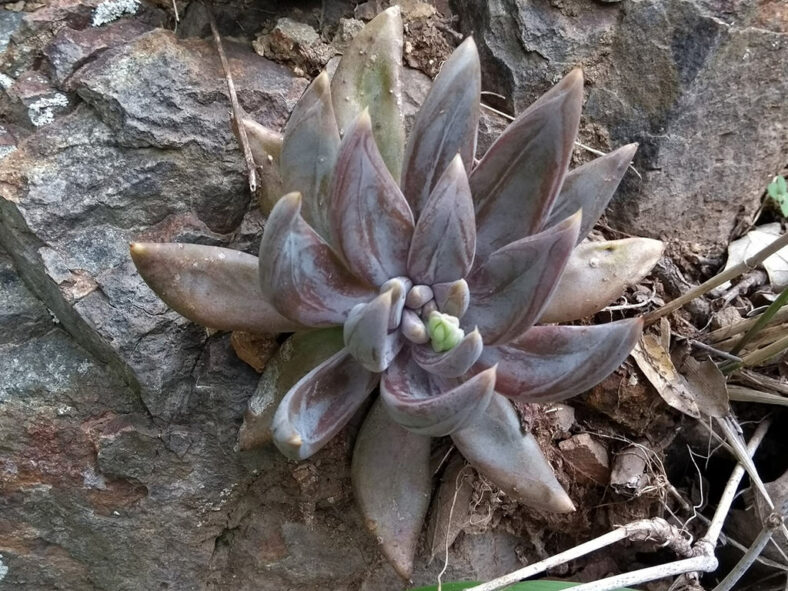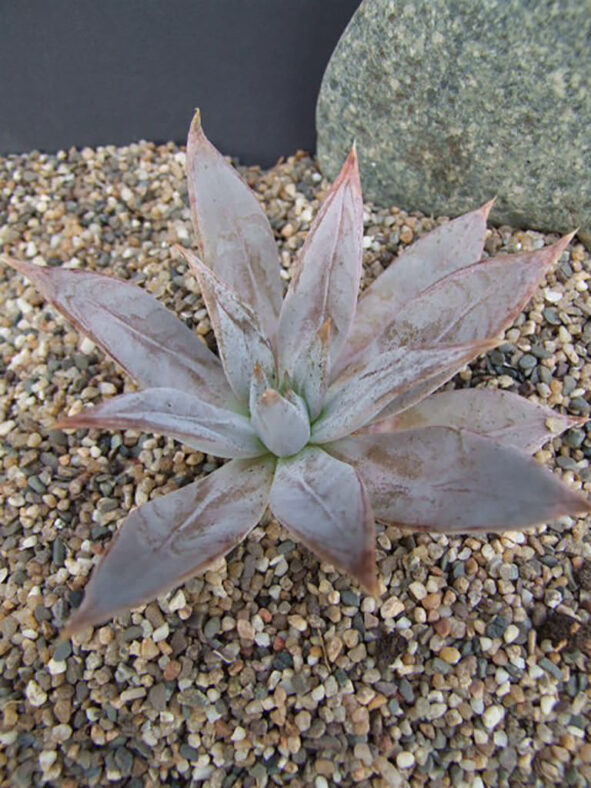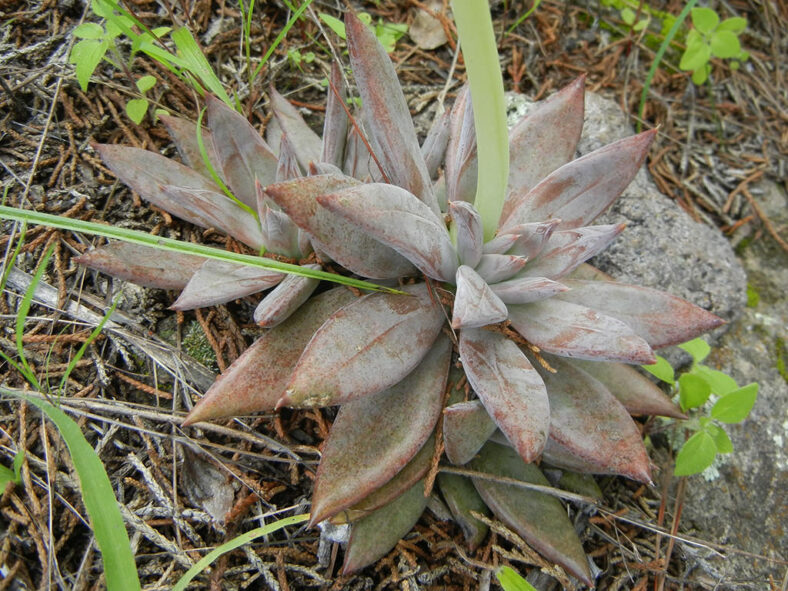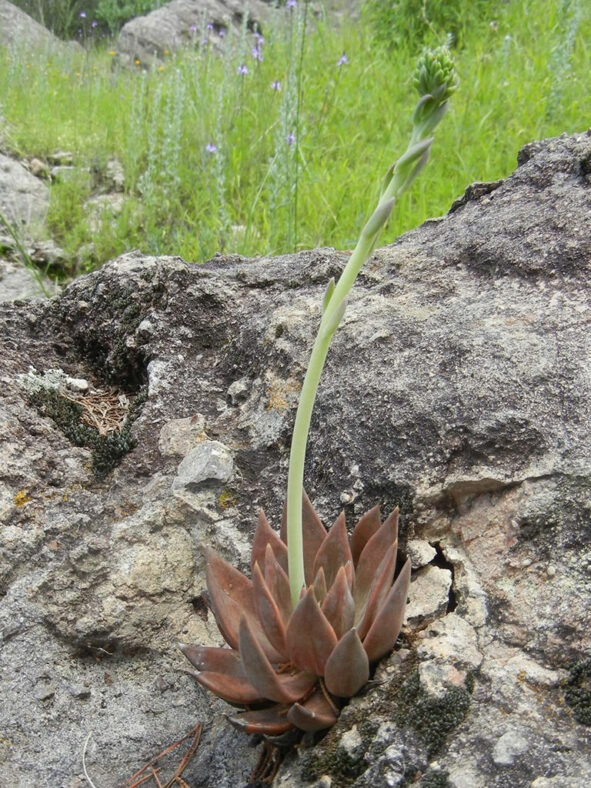Echeveria craigiana was discovered in 1939 by Robert T. Craig and George Lindsay among pines and ferns near the Barranca de Urique (valley formed by the river of the same name) in the state of Chihuahua.
Scientific Name
Echeveria craigiana E.Walther
Scientific Classification
Family: Crassulaceae
Subfamily: Sempervivoideae
Tribe: Sedeae
Genus: Echeveria
Etymology
The specific epithet "craigiana" (pronounced kray-jee-AY-nuh) honors its co-discoverer, Robert T. Craig (1902-1986), an American dentist and botanist.
Origin
Echeveria craigiana is native to northwestern Mexico. It grows on rock slopes in pine-oak forests in Chihuahua and Sonora.
Description
Echeveria craigiana is a small succulent that forms a dense rosette of brownish to brownish-green, slightly glaucous leaves. The rosette is either stemless or has a short stem and can reach a diameter of 6 inches (15 cm). This plant only produces offsets in old specimens. The leaves are linear-oblong, pointed, flat above, rounded below, and can measure up to 4.4 inches (11 cm) long and 0.8 inches (2 cm) wide.
In the fall, Echeveria craigiana produces red, bell-shaped flowers on erect stalks that can grow up to 20 inches (50 cm) tall. The small flowers can reach a length of 0.45 inches (1.1 cm) and a diameter of 0.5 inches (1.3 cm) at the mouth.

How to Grow and Care for Echeveria craigiana
Light: Echeveria craigiana requires full sun to partial shade for optimal growth. Therefore, place it near the brightest window in your home. In addition, if you are moving the plant outside in spring, do it gradually and avoid exposure to intense afternoon sun.
Soil: Having soil that drains quickly is most important for growing a healthy succulent. While many growers prefer to create their own soil mix, commercial soil specially formulated for succulents will work fine.
Temperature: High temperatures are not a problem as long as there is plenty of fresh air, but Echeveria craigiana is a tender succulent and must be brought indoors if there is a risk of freezing temperatures. It grows best in USDA Plant Hardiness Zones 10a to 11b, with average minimum winter temperatures ranging from 30 to 50 °F (-1.1 to 10 °C).
Watering: During the growing season, this plant prefers the "soak and dry" method. Water deeply and then let the soil completely dry out before watering again. Water sparingly during the winter, only enough to keep the plant from shriveling. Above all, if you have a saucer under the pot, do not forget to empty the excess water.
Fertilizing: Although it can grow well without fertilizer, the plant may benefit from extra nutrients. Feed only during the growing season and use a water-soluble fertilizer diluted to half the recommended strength.
Repotting: If growing it in a container, repot as needed in spring or early summer, but ensure the soil is dry before you start. Also, always use a container with drainage holes.
Propagation: Echeveria craigiana is usually propagated from leaves but can also be grown from offsets and seeds. Spring is the best time to take leaf cuttings and separate offsets, while spring or summer are ideal for sowing seeds.
Learn more at How to Grow and Care for Echeveria.
Toxicity of Echeveria craigiana
Echeveria craigiana has no reported toxic effects and is safe to grow around children and pets.
Hybrids of Echeveria craigiana
Links
- Back to genus Echeveria
- Succupedia: Browse succulents by Scientific Name, Common Name, Genus, Family, USDA Hardiness Zone, Origin, or cacti by Genus
Photo Gallery
Click on a photo to see a larger version.


